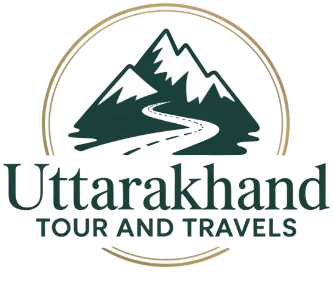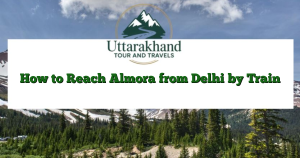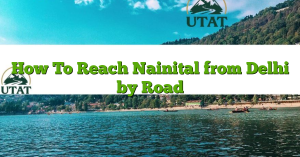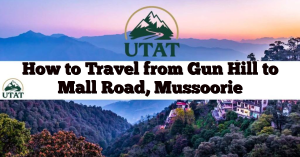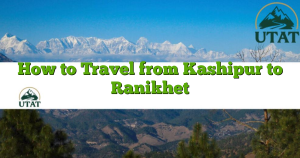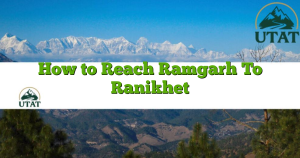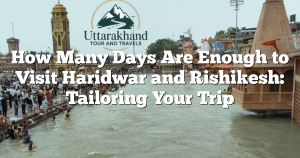The Valley of Flowers, nestled in the heart of Uttarakhand’s Chamoli district, is a globally celebrated UNESCO World Heritage site renowned for its vibrant blooms, alpine meadows, and sweeping vistas of snow-laden Himalayan peaks. From mid-July to early September each year, the valley becomes a living tapestry of wildflowers—a bucket-list destination for nature lovers, trekkers, photographers, and adventure souls alike.
Traveling from Mussoorie, you’ll experience a classic Himalayan passage: winding roads through storied river valleys, forested ridges, lively towns, and finally, a rewarding high-altitude trek into the floral heart of the Garhwal ranges. This guide spells out all travel options, key stops, the logistics of the trek, safety tips, and frequently asked questions for a seamless Valley of Flowers adventure.
Distance and Travel Time
- By Road: Approximately 315–355 km from Mussoorie to Govindghat (the trek starting point), depending on route taken.
- Travel Time: 10–12 hours by car or bus (not including the trek).
- Trekking: 13 km Govindghat to Ghangaria (~5–7 hours trek); then 3–4 km Ghangaria to the Valley of Flowers gate (2–3 hours, gentle walk).
No direct trains or flights serve the Valley; the journey is a blend of road travel and trekking.
Step-by-Step Guide
1. Mussoorie to Govindghat (Road Journey)
Route Overview:
- Mussoorie to Dehradun:
34 km, 1.5–2 hours, via the scenic Mussoorie Road descending to the city. - Dehradun to Rishikesh:
45 km, about 1.5 hours, mostly highway. - Rishikesh to Joshimath:
295 km, 8–10 hours, through key Garhwali towns: Devprayag, Srinagar, Rudraprayag, Karnaprayag, Nandaprayag, Chamoli. - Joshimath to Govindghat:
25 km, about 1 hour (narrow, mountainous roads; often busy in the pilgrimage season).
Transport Options:
- Private taxi: Most comfortable and allows scenic stops.
- State/private buses: Regular service from Dehradun/Rishikesh to Joshimath (morning departures).
- Shared jeeps/maxi-cabs: Operate on Rishikesh–Joshimath and Joshimath–Govindghat routes; best for budget travelers and those comfortable with flexible timing.
Tips:
- Start early from Mussoorie to maximize daylight and minimize traffic.
- Breaking the journey at Joshimath, Rudraprayag, or Karnaprayag is advised for comfort and acclimatization.
- Book bus or taxi seats ahead, especially July–September and holidays.
2. Trekking from Govindghat to Ghangaria (Base Camp)
- Distance: 13 km, well-marked trekking route along the Pushpawati River.
- Elevation Gain: Approx. 1,200 m (from 1,900 m at Govindghat to 3,000 m at Ghangaria).
- Difficulty: Moderate; sections with stone steps and gradual climbs; suitable for people with basic fitness.
- Time Required: 5–7 hours on foot; mules/porters available for luggage or those seeking assistance.
- Helicopter Service: Seasonally (weather permitting), a helicopter operates from Govindghat to Ghangaria—takes 7–10 minutes, but seats are limited and must be pre-booked.
En route: Checkpoints, dhabas, basic tea stalls, and water sources are available at gradual intervals.
3. Ghangaria to Valley of Flowers
- Distance: 3–4 km trek from Ghangaria to the park gate (continued inside valley for up to 5–6 km).
- Trek Nature: Wide path, gentle gradient amidst forest, streams, and wildflower carpets.
- Time: 2–3 hours to first major meadows; full exploration may take 5–6 hours return.
- Entry: Entry pass/ticket purchased at the park’s gate in Ghangaria.
No vehicles or animals allowed; the valley trek must be done on foot (porters available for luggage).
Key Travel Tips
- Best time: Visit mid-July to early September for the richest floral displays. The valley is closed in winter (typically late October to June).
- Accommodation: Book hotels or guesthouses in Govindghat or Ghangaria well in advance—July–September is peak bloom/pilgrimage season.
- Packing: Carry light rain gear (monsoon rains are common), sturdy trekking boots, woolens, sunscreen, cap, walking stick, personal meds, and power bank.
- Health: Acclimatize to altitude; avoid strenuous activity immediately after road travel.
- Safety: Carry ID for all checkposts; valley is open daily between 7 am–5 pm (no camping permitted inside).
- Waste: Carry out all trash; help keep the UNESCO site pristine.
Wildlife and Wonders
- Flora: Orchids, Himalayan blue poppies, primulas, anemones, marigolds, and 500+ species of wildflowers—fields burst in rainbow colors post-July rains.
- Fauna: Himalayan monal, musk deer, blue sheep, reticent snow leopard, butterflies, and diverse birdlife.
- Landscape: Rushing streams, misty ridges, and distant views of Nanda Devi and other snow peaks.
Who Should Visit?
- Trek and nature lovers, photographers, pilgrims.
- Families (with healthy older children) and groups; not recommended for very young kids or those with severe health issues.
- Seekers of Himalayan beauty—a must for botanical, ecological, and birdwatching enthusiasts.
Frequently Asked Questions
Q: Can I do the Valley of Flowers trip in a single day from Mussoorie?
A: Not recommended. The drive to Govindghat plus the trek requires a minimum of 2–3 days for a meaningful visit and safe rest/acclimatization.
Q: Are there direct flights or trains?
A: No. The route is entirely by road; Dehradun is the nearest airport/railhead for inbound travelers.
Q: How difficult is the trek?
A: Moderate; long but not technically hard. Preparation with regular walks/hikes is sufficient for most people.
Q: Is the valley accessible in winter?
A: No, the park closes to visitors due to heavy snow from late October to mid-June.
Q: When should I book accommodation?
A: Book Ghangaria or Govindghat hotels/guesthouses at least 1–2 months ahead for July–September.
Sample Itinerary
Day 1:
Mussoorie → Dehradun → Rishikesh → Joshimath (optional overnight at Rudraprayag/Karnaprayag for a break)
Day 2:
Joshimath → Govindghat → Trek to Ghangaria (overnight in Ghangaria)
Day 3:
Full-day trek and exploration of Valley of Flowers; return to Ghangaria
Day 4:
Trek back to Govindghat, drive out to Rishikesh/Dehradun/Mussoorie or onward
Summary Table
| Segment | Distance | Time |
|---|---|---|
| Mussoorie–Dehradun | 34 km | 1.5–2 hours |
| Dehradun–Rishikesh | 45 km | 1.5 hours |
| Rishikesh–Joshimath | 295 km | 8–10 hours |
| Joshimath–Govindghat | 25 km | 1 hour |
| Govindghat–Ghangaria | 13 km | 5–7 hours (trek) |
| Ghangaria–Valley | 3–4 km | 2–3 hours (trek) |
Final Thoughts
Traveling from Mussoorie to the Valley of Flowers is a true Himalayan odyssey—a harmonious blend of winding roads, vivid cultural stops, and an astonishing high-mountain trek. Plan ahead, pace yourself, absorb the floral marvels and wild Himalaya, and you’ll return with memories as vibrant as the fields themselves.
